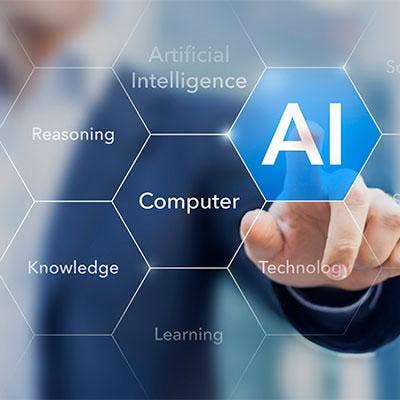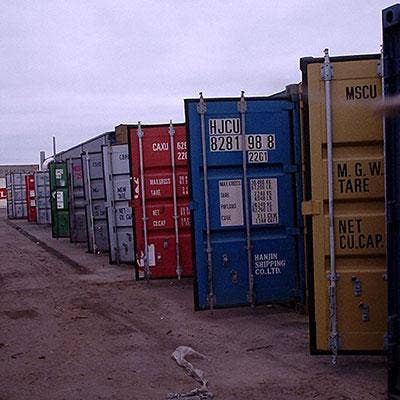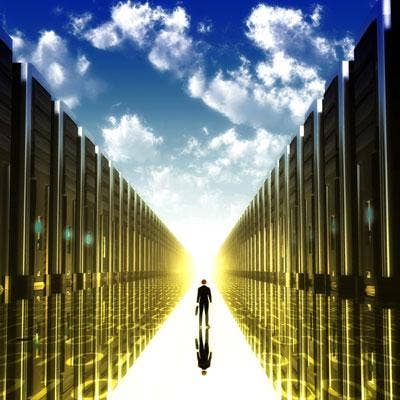10 Cloud Predictions For 2017

What's Likely In Store For The Cloud In 2017
The IT landscape is changing at a breathtaking pace, with waves of disruption crashing over the industry nearly every day. Cloud-oriented technologies that emerged in the last few years are now causing seismic changes in how businesses leverage their digital infrastructure, and how they take advantage of that infrastructure to engage with customers.
With each disruptive wave, the channel is expected to adopt new skill sets and help tackle business challenges that weren't even discussed in years past. While grappling with that kind of change can be intimidating, an eye to the future is necessary for solution providers who are intent on maintaining healthy businesses for years to come.
The channel must be ready for every paradigm shift, enterprise expectation and vendor realignment that's coming its way. These are some of the developments that cloud industry experts tell CRN are in store for 2017.

ChatOps Out Of The Shadows
Chat apps like Slack, HipChat and Flowdock have already disrupted email. But 2017 will see a rush to ChatOps adoption, extending those products into IT operations and mission-critical workflows.
The shift to ChatOps will tie in with the development of artificially intelligent bots that integrate those collaborative platforms with other business apps and infrastructure monitoring tools, said Mitch Wainer, co-founder of IaaS provider DigitalOcean.
"The more that Slack and these chat apps can minimize the number of interactions required to do your job at work, the better," Wainer said.
Atlassian's Steve Goldsmith, who manages the company's HipChat product, said chat apps were until recently in the realm of shadow IT—applications not consecrated by IT administrators.
Now that they're in the mainstream, with teams relying on them for real-time communications, ChatOps integrations will spread beyond development and IT teams, and across the workplace, Goldsmith said.

AIOps Let Loose
Expect far more artificial intelligence platforms to be deployed on enterprise networks to help administrators maintain workload integrity amid a surge of new applications.
Algorithmic IT operations, or AIOps – a term recently introduced by Gartner – is an evolution of IT Operations Analytics. The practice allows network analysis and troubleshooting to be conducted in real-time to tackle the complexity of modern hybrid environments.
AIOps takes advantage of recent advances in artificial intelligence and machine learning to predict application behavior before problems arise, and automate infrastructure management, allowing tasks and processes to be executed without human intervention.
Assaf Resnick, CEO of BigPanda, an incident response software developer, said the industry is on the cusp of embracing algorithmic tools and artificial intelligence for managing cloud infrastructure, taking "IT operations to a new level with advanced analytics."

AI For The SI
The long-predicted proliferation of artificial intelligence solutions was largely delivered in 2016. Cloud providers like Google, Amazon, Microsoft, IBM, Salesforce and Oracle all did their share in democratizing the technology.
"Applications and platforms are embedding AI at every layer to improve efficiency and reduce complexity in business software," said Amit Zavery, senior vice president for cloud platform and integration products at Oracle.
The channel will start embracing those technologies and establishing formal practices around them in 2017.
Large systems integrators like Accenture are already making major investments.
Marc Carrel-Billiard, a managing director at Accenture Labs, said the market is exploding, and soon "AI will become a first-class citizen of the enterprise."
Implementing intelligent automation and AI will become core competencies demanding a "fundamentally new approach," Carrel-Billiard said.

App Explosion
New cloud services, development platforms, and collaborative methods have laid the groundwork for an app explosion in 2017. Many industry experts believe most of the apps that will be prevalent in the enterprise over the next few years haven't even been created yet.
The coming wave of applications will be built with cloud-native architectures that enable developers to iterate rapidly and put updated versions into production orders-of-magnitude faster than ever before.
That means more opportunities for solution providers to help their clients develop or procure, monitor, manage and retire custom-built and Software-as-a-Service products.
More than ever, partners who focus on delivering applications, not infrastructure, should thrive.

Container Companies Seek Out Channel Partners
With all the disruption application containers have already caused in the enterprise, it's easy to forget the technology, as reintroduced a few years back by Docker, is still in its relative infancy.
But container-tech companies are finding they need to mature their channel strategies faster than their predecessors. In 2016, Docker introduced a two-tier program, and startups like Rancher Labs had to accelerate channel formulation to meet partner demand.
In 2017, the Docker ecosystem will see a wave of channel development, with more container-tech startups establishing programs to formalize their relationships with the partners who can bring their solutions to larger markets.

Out With Infrastructure
For all the fun of provisioning virtual machines and rightsizing memory and compute instances, plenty of developers would rather never think about any of those things.
Enterprises in the process of digital transformation want to build apps, push them into production environments and let employees and customers use them as soon as possible. They don't want to concern themselves with how the underlying infrastructure is selected or scaled.
Containers have advanced the shift toward greater independence from infrastructure. Serverless computing is taking that idea to the next level.
AWS Lambda and Microsoft Azure Functions both gained enterprise adoption faster than even their creators expected. Those innovative services, delivering event-driven compute, have clearly found an audience.
In 2017, the cloud will deliver more serverless models making possible compute-on-demand.

No Cloud Left To Fail
HPE shuttered its Helion public cloud early in 2016. Likewise with Verizon's public cloud. Cisco Intercloud Services will meet the same fate in March. Rackspace is squarely focused on becoming a managed services play for other providers.
With the Big 3 of Amazon, Microsoft and Google gobbling up market share, and so many rival providers having recently exited or pulled back from the Infrastructure-as-a-Service market, the natural question is who's left to fail?
IBM SoftLayer is still standing, and suddenly unique as an OpenStack-virtualized IaaS cloud. And several tier-two players remain, including Oracle, NTT, and Alibaba.
Those providers all have market niches strong enough to at least keep them afloat, and while it'll be an uphill battle for any to gain share against AWS, they should survive the long year ahead and still be kicking into 2018.

DevOps Deals With Its Bottleneck
DevOps practices have been accelerating application development and deployment in the cloud. But security has emerged as a major bottleneck.
"The biggest change that will hit production in the next 12 to 18 months is a new way of implementing security, at a cultural and technical level," Mitchell Hashimoto, founder and CTO of HashiCorp, told CRN.
DevOps tools (like those from HashiCorp) that remove friction from the development cycle don’t amount to much if customers follow security protocols that require months of approval before apps can go into production. The rise of container schedulers like Kubernetes and microservices are also distressing security in new ways.
DevOps practitioners are "being held back by this old school way of locking down their data centers," Hashimoto told CRN. "It's time to start applying DevOps more rigorously to security in addition to development and operations."
That means security needs to move with the application, built into every step of the DevOps process rather than a layer applied at its end.

Massive Locality
Tax compliance restrictions, data sovereignty laws and demand for billing in local currencies will drive enterprise buyers to look closer to home for their software in 2017.
"They will need localized, packaged cloud services that meet their requirements, signaling an enormous opportunity for the channel," said Daniel Saks, co-CEO of AppDirect, a cloud-based software distribution platform.
While the U.S. has dominated the enterprise software market over the last decade, competition is about to get much tougher. The globalization of cloud development platforms like AWS and Azure will spark an explosion of SaaS developers based overseas, Saks said, noting that tech hubs are popping up all over Europe.
These companies will seek partners that cater to businesses in their home countries and can advise them on country-specific data laws. At the same time, overseas developers will look to the channel to help them make sales inroads in the U.S. while adhering to trade and data laws.

Augmenting Enterprise Reality
Virtual and augmented reality had a big year in 2016, with some new products; like the Microsoft HoloLens, Google Cardboard, and Oculus Rift; wowing consumers with the potential of the technology.
But in 2017, use cases will emerge in the enterprise—everything from training high-skill workers to collaboration to design and prototyping.
And the coming generation of headsets will give developers the tools to integrate big data and analytics engines into virtual and augmented reality applications. Business leaders will be able to visualize large amounts of data in ways never before possible.